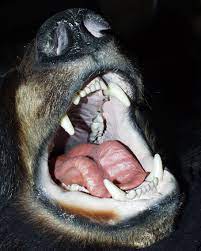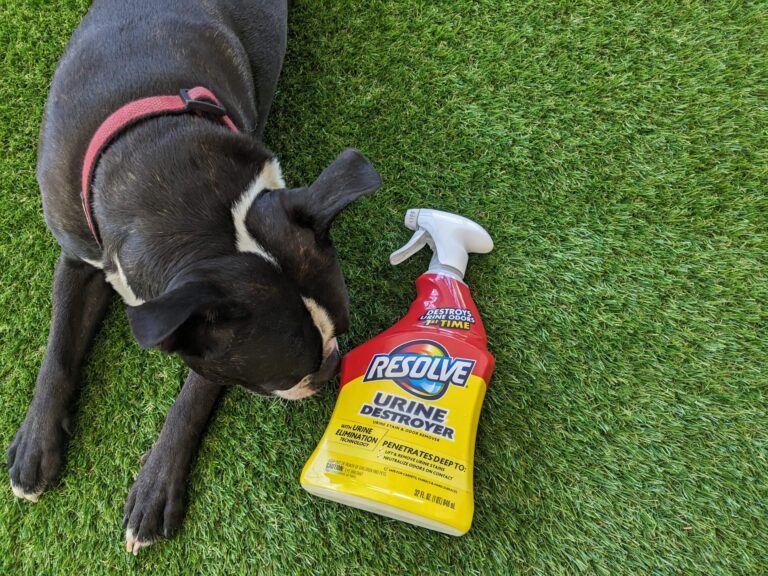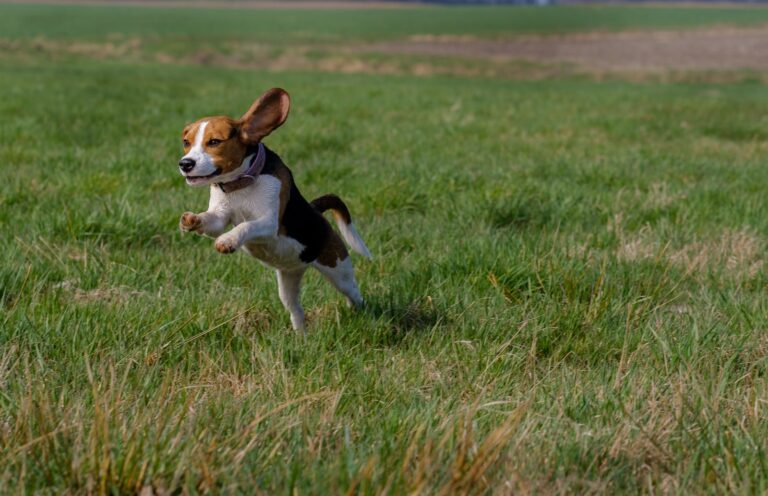Unleashed Insights: Navigating the Bite Forces of Canine Companions
Imagine a world where our furry companions serve as not only friends but also wellsprings of strength and resilience. In this captivating exploration, I would like to plunge into the riveting realm of dog bites, where the formidable bite forces of diverse breeds intersect with the delicate vulnerability of the human hand. I will examine most common dog breeds. From the robust Kangal to the spirited Boston Terrier, each breed crafts a distinctive narrative of might, caution, and camaraderie. As we traverse these varying bite forces, we unearth the profound essence of responsible ownership and immerse ourselves in the intricate tapestry of dog-human interactions.
The Mighty Guardians: High Bite Force Breeds
Kangal: Power and Precision
The Kangal, wielding a staggering bite force of approximately 743 psi, emerges as an unparalleled guardian of extraordinary strength. Picture a landscape where the Kangal’s bite unleashes a maelstrom of severe trauma, ripping through tissues and exposing hidden structures.
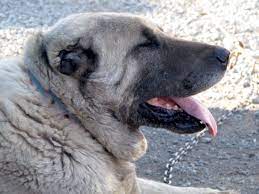
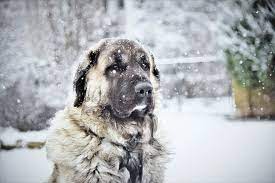
The Kangal, originating from Turkey, stands as a remarkable breed renowned for its impressive bite force of approximately 743 psi. This breed has gained a reputation for its exceptional guarding abilities, which are attributed to its formidable strength. If Kangal’s bites you in your hand, the potential for injury is significant. The bite initiates deep lacerations that penetrate the skin and underlying tissues, causing a disruption in the structural integrity. Muscle fibers, tendons, and ligaments are torn apart due to the force exerted by the Kangal’s bite. This trauma triggers an immediate physiological response involving blood clotting and inflammation to initiate the healing process.
Injuries inflicted by the Kangal’s bite require meticulous wound management and potentially surgical intervention. The risk of infections is heightened due to the depth of tissue damage. The complexity of the injuries, along with the breed’s powerful bite force, emphasizes the need for specialized care and a comprehensive approach to rehabilitation.
Despite The Kangal’s bite force, Dog owners notice compelling link between power and loyalty. It showcases interplay between power, protection, and the human-canine bond. These dogs are great protectors and will sacrifice their life for their owners.
Dogue de Bordeaux: Elegance in Vigor
The Dogue de Bordeaux, hailing from France, exhibits a notable bite force of around 556 psi. This breed’s is also known as French Mastiff.
When a Dogue de Bordeaux’s bite comes into contact with the human hand, the resulting physiological interactions can be comprehended through a medical lens. The breed’s bite force is the culmination of intricate anatomical components and muscular dynamics.
Visualize the moment of engagement as the Dogue de Bordeaux’s jaws close around the hand. The bite initiates a biomechanical process where the temporalis and masseter muscles come into play. These muscles, akin to a pulley system, exert tension on the dog’s mandible, facilitating the force transfer necessary for biting.
As the Dogue de Bordeaux’s bite force is exerted, it triggers a cascade of mechanical events within the tissues of the hand. Deep lacerations occur, causing disruption to the skin’s barrier and delving into deeper layers of tissues. The bite’s impact is akin to a controlled surgical incision, affecting muscle fibers, tendons, and ligaments in a precise manner.
In this medical perspective, the hand’s response to the Dogue de Bordeaux’s bite can be likened to a series of physiological reactions. The tissues react to the force by engaging mechanisms such as blood clotting and inflammation. The body’s healing processes are initiated, with the aim of repairing the tissue damage caused by the bite.

While the Dogue de Bordeaux’s bite force showcases strength, its implications extend beyond sheer force. The precise manner in which the bite disrupts tissues reflects a level of anatomical insight and coordination. The deep lacerations induced by the bite are not random injuries; they are indicative of a controlled impact that requires specialized medical attention.
In essence, the Dogue de Bordeaux’s bite force is a confluence of anatomical forces and tissue reactions. It represents a unique interplay between muscular mechanics and tissue response, prompting a medical perspective that appreciates the intricacies of the breed’s bite mechanics and their effects on the human hand.
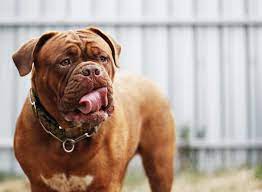
German Shepherd: Versatility and Impact
Originating from Germany, the German Shepherd is celebrated for its versatility and boasts a bite force that ranges from 238 to 750 psi. This broad spectrum of bite force can cause a wide array of potential injuries on the human hand.
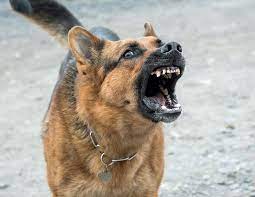
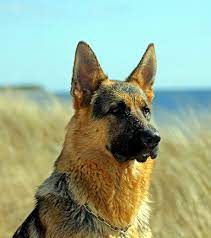
Upon contact, the German Shepherd’s bite can initiate injuries that vary in severity. Deep lacerations are possible, driven by the breed’s well-developed temporalis and masseter muscles that generate force during biting. The force can penetrate through layers of skin, muscle fibers, tendons, and ligaments, leading to various degrees of tissue damage.
The injuries inflicted by a German Shepherd’s bite highlight the versatility of the breed’s bite force. Muscle damage may result in pain and limited hand functionality, while tendon and ligament tears can lead to significant impairment. Depending on the force applied, fractures within the hand’s bones are also possible, particularly in cases of higher bite forces.
The potential for infections is heightened due to the depth of tissue damage caused by the bite. Openings created by the forceful impact offer entry points for bacteria, underlining the importance of prompt antibiotic treatment and meticulous wound care.
The breed’s versatile bite force also reflects a range of potential healing outcomes. Less severe injuries may heal with proper wound management, while more extensive injuries may necessitate specialized medical interventions such as suturing, surgical repair of tendons or ligaments, and orthopedic procedures for bone fractures.
Physical therapy and rehabilitation may play a crucial role in optimizing the recovery process, especially in cases involving tendon, ligament, or muscle damage. The spectrum of injuries resulting from a German Shepherd’s bite underscores the breed’s adaptable nature and the importance of tailored medical assessment and treatment to achieve the best possible outcomes.
In summary, the injuries caused by a German Shepherd’s bite encompass a wide range of potential outcomes, including deep lacerations, muscle, tendon, and ligament damage, and possible bone fractures. The breed’s versatile bite force calls for comprehensive medical evaluation, specialized interventions, and attentive wound care to ensure effective healing and the preservation of the hand’s functionality
Rottweiler: Strength in Focus
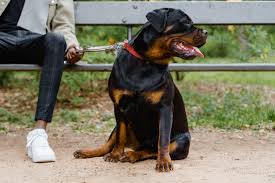
When a Rottweiler’s bite interacts with the human hand, the resulting injuries exhibit a distinct pattern due to its bite force of approximately 328 psi. The Rottweiler’s bite force is influenced by its jaw structure and the mechanics of its bite, emphasizing strength and focus.
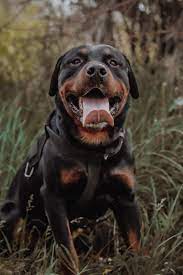
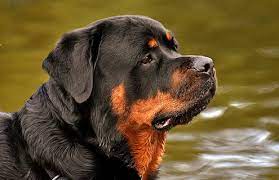
Upon contact, the Rottweiler’s bite initiates deep lacerations that penetrate the hand’s tissues. The breed’s well-developed cranial muscles, including the temporalis and masseter muscles, generate force that is transmitted through the jaw and focused onto the teeth. This force can tear through layers of skin, muscle fibers, tendons, and ligaments, leading to significant tissue trauma.
The injuries inflicted by a Rottweiler’s bite reflect both the strength and the breed’s focus. Muscle damage can lead to pronounced discomfort and reduced hand functionality. Tendons and ligaments within the hand may sustain partial or complete tears, necessitating specialized medical attention and potential surgical intervention to restore optimal function.
Given the depth of tissue damage caused by the bite, the risk of infection is heightened. The forceful impact of the Rottweiler’s bite creates openings for bacteria to enter, increasing the likelihood of infections that require prompt treatment with antibiotics and meticulous wound care.
While fractures are less common due to the breed’s bite force, they can still occur if the bite is applied to bones within the hand. The potential for bone fractures emphasizes the need for accurate diagnosis and specialized orthopedic intervention, if necessary.
Proper wound management, including thorough cleaning, suturing, and dressing, is vital to prevent infections and promote efficient healing. Depending on the extent of injuries, physical therapy and rehabilitation may be recommended to ensure the restoration of hand functionality and minimize any long-term effects.
In conclusion, injuries resulting from a Rottweiler’s bite can encompass deep lacerations, potential tendon and ligament tears, and, in more severe cases, bone fractures. The breed’s powerful bite force, along with its focused intent, requires comprehensive medical evaluation, specialized treatment, and vigilant wound care to facilitate optimal healing and preserve the hand’s functionality.
Pit Bull Terrier: The Dichotomy of Strength
When a Pit Bull Terrier’s bite interacts with the human hand, the resulting injuries can be quite impactful due to its bite force ranging from 235 to 765 psi. The biomechanics of the Pit Bull’s jaw and muscle arrangement contribute to its ability to exert force during biting.
Upon contact, the Pit Bull’s bite initiates deep lacerations that penetrate the hand’s tissues. The force applied by the powerful temporalis and masseter muscles can tear through layers of skin, muscle fibers, tendons, and ligaments. This results in a disruption of the hand’s structural integrity, causing severe trauma to the affected area.
The injuries inflicted by a Pit Bull’s bite can be both extensive and complex. Muscle damage can lead to impaired hand functionality and potentially affect mobility. Tendons and ligaments may suffer from partial or complete tears, necessitating specialized medical attention and, in some cases, surgical intervention to restore proper function.
Due to the depth and severity of tissue damage, the risk of infection is heightened. The bite’s forceful impact can create openings for bacteria to enter, leading to a higher likelihood of infections that require timely treatment with antibiotics and careful wound management.


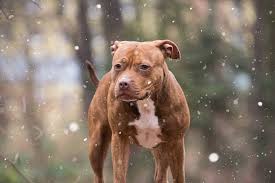
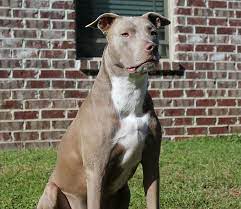
In more severe cases, the Pit Bull’s bite force can result in fractures, especially if the bite is applied to bones within the hand. The potential for bone fractures introduces an additional layer of complexity to the injuries, potentially requiring orthopedic expertise for accurate diagnosis and treatment.
Proper wound care, including cleaning, suturing, and dressing, is crucial to prevent infections and promote healing. Depending on the extent of injuries, physical therapy and rehabilitation may be necessary to regain hand functionality and minimize long-term effects.
In summary, injuries from a Pit Bull Terrier’s bite can range from deep lacerations to potential tendon tears, ligament damage, and even bone fractures. Due to the breed’s powerful bite force, comprehensive medical assessment, specialized treatment, and diligent wound care are essential to ensure optimal healing and restore the hand’s functionality.
American Bulldog: Grace Under Pressure
The American Bulldog, has an estimated bite force of about 305 psi.
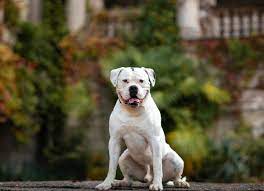

Being attacked by an American Bulldog can result in a series of traumatic events that require immediate attention and medical intervention. The breed’s strength and bite force, combined with its temperament, can lead to severe injuries. Understanding the potential consequences of such an attack is important for both prevention and responding effectively in case of an encounter.
- Physical Injuries: An American Bulldog’s attack can lead to various types of injuries, ranging from puncture wounds and lacerations to fractures and soft tissue damage. The breed’s bite force, which is around 305 psi, can cause deep lacerations that may affect muscles, tendons, ligaments, and even bones. The severity of the injuries can vary based on the circumstances of the attack, the dog’s aggression level, and the victim’s ability to defend themselves.
- Soft Tissue Trauma: The force of the bite can lead to extensive soft tissue trauma, potentially causing damage to blood vessels, nerves, and connective tissues. Puncture wounds and lacerations can result in bleeding, swelling, and bruising.
- Risk of Infection: One of the significant concerns following an attack by any dog, including American Bulldogs, is the risk of infection. Dog bites can introduce bacteria from the dog’s mouth into the victim’s body, leading to infections that can range from mild to severe. Immediate medical attention is crucial to clean and disinfect the wounds and to prescribe antibiotics to prevent or treat infections.
- Potential for Fractures: If the attack involves forceful biting on bones, such as hands or arms used to defend against the attack, fractures may occur. The breed’s bite force may lead to broken bones, especially if the bones are subjected to intense pressure during the attack.
- Emotional and Psychological Impact: Being attacked by a dog, especially a strong and powerful breed like the American Bulldog, can leave emotional and psychological scars. Victims may experience fear, anxiety, and even post-traumatic stress disorder (PTSD) after such an event.
- Immediate Medical Attention: In the aftermath of an attack, seeking immediate medical attention is vital. Wounds need to be thoroughly cleaned, treated, and potentially sutured. X-rays may be required to assess for fractures or other hidden injuries. Medical professionals will also consider the risk of infections and may prescribe antibiotics and tetanus shots as necessary.
- Follow-Up Care: Depending on the severity of the injuries, victims may require ongoing medical care, including wound care, physical therapy, and potential surgical interventions for complex injuries.
In the event of an attack by an American Bulldog or any dog, safety should be the top priority. If an attack is in progress, attempting to protect yourself by using clothing, bags, or objects as barriers can help minimize injuries. After the attack, seeking medical attention immediately and reporting the incident to local animal control or law enforcement is crucial. Additionally, seeking counseling or therapy to address emotional trauma may also be beneficial in the aftermath of such an event
Gentle Guardians: Lower Bite Force Breeds
Doberman: Poise and Precision
If you experience an attack by a Doberman, you will surely suffer from a forceful bite followed by a distressing scenario, characterized by intense physical and psychological trauma.
The breed’s combination of strength, agility, and protective instincts, result in grave injuries that demand immediate medical attention and emotional support. In an attack by a Doberman, the dog’s inherent traits come into play with a heightened intensity. The attack sequence may involve swift and aggressive movements, as the Doberman’s powerful muscles and agile physique enable it to respond rapidly to perceived threats. The attack can escalate with the dog lunging, snapping, and forcefully biting its target, often driven by territorial defense or perceived danger.
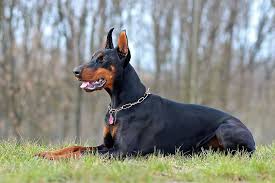
The bite from a Doberman in such an attack can inflict severe injuries due to the breed’s bite force, which ranges from 230 to 600 psi, and the dog’s biomechanical attributes. The bite force is generated by the dog’s muscular anatomy, specifically the temporalis and masseter muscles, which efficiently transmit force through its jaw.
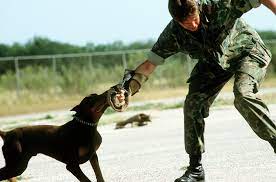
The bite’s impact manifests as deep and traumatic lacerations. The powerful bite can effortlessly penetrate layers of skin, muscle fibers, tendons, and ligaments, causing extensive tissue damage. The force behind the bite is akin to a relentless force meeting resistance, leaving a profound mark on both the physical and psychological well-being of the victim. The injuries resulting from the brutal bite are severe and far-reaching. Puncture wounds, deep lacerations, and even fractures may occur, depending on factors such as the dog’s aggression level and the victim’s efforts to defend themselves. The bite-induced trauma involves not only physical damage but also psychological repercussions. Victims of such attacks often experience overwhelming fear, extreme pain, and a deep sense of vulnerability. The physical and psychological trauma can intertwine, leaving lasting scars that extend beyond the immediate injuries. A grave concern following a brutal dog bite, particularly by a Doberman, is the elevated risk of complications. The bite introduces bacteria from the dog’s mouth into the victim’s body, increasing the likelihood of infections.
Prompt medical intervention is crucial to clean and disinfect the wounds and prescribe antibiotics to mitigate the risk of infection. In the aftermath of a brutal Doberman attack and the consequential bite, seeking immediate medical attention is paramount. Medical professionals will assess the extent of injuries, tend to wounds, and determine the necessity of interventions like sutures or surgeries. Depending on the severity of injuries, victims may require ongoing medical care, including wound management and potential rehabilitation to regain functionality. Moreover, the emotional scars can have enduring effects, ranging from heightened anxiety to post-traumatic stress disorder (PTSD).
Australian Shepherd: Spirit and Agility
During an attack by an Australian Shepherd, the breed’s innate characteristics may come into play. The dog’s agility and speed may result in sudden movements, including lunging and snapping, driven by its instinct to control or herd.

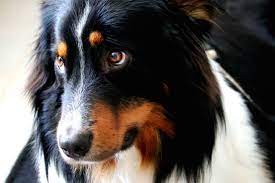
If bitten by an Australian Shepherd during such an attack, injuries may include puncture wounds, lacerations, and tissue contusions. The bite may be forceful due to the breed’s muscular jaw structure. While the bite force of Australian Shepherds is relatively moderate, ranging from 110 to 175 psi, the bite’s impact can still cause damage to tissues within the hand.
Injuries resulting from the bite may involve bleeding, swelling, and bruising around the bite site. Nerves, blood vessels, and other structures within the hand may also be affected, potentially leading to sensations of numbness, tingling, or loss of sensation.
A critical concern following a dog bite, including that of an Australian Shepherd, is the risk of infection. The introduction of bacteria from the dog’s mouth into the wound can lead to infections. Seeking prompt medical attention is important to properly clean and disinfect the wound, as well as to consider antibiotic treatment to mitigate the risk of infection.
Immediate medical attention is crucial after a dog attack and subsequent bite. Medical professionals will assess the extent of the injuries, clean and treat wounds, and determine the need for interventions like sutures or other wound closure methods.
Chihuahua: Small But Mighty
A Chihuahua’s bite may seem small in size, but it can still lead to a range of potential outcomes that need to be understood. Chihuahuas are known for their diminutive stature, but their bite force can still result in injuries that require attention.
When bitten by a Chihuahua, the resulting injuries are generally less severe compared to larger dog breeds due to their smaller jaw size and bite force, estimated to range from 30 to 120 psi. The bite’s impact may include minor abrasions, surface scratches, and small puncture wounds.
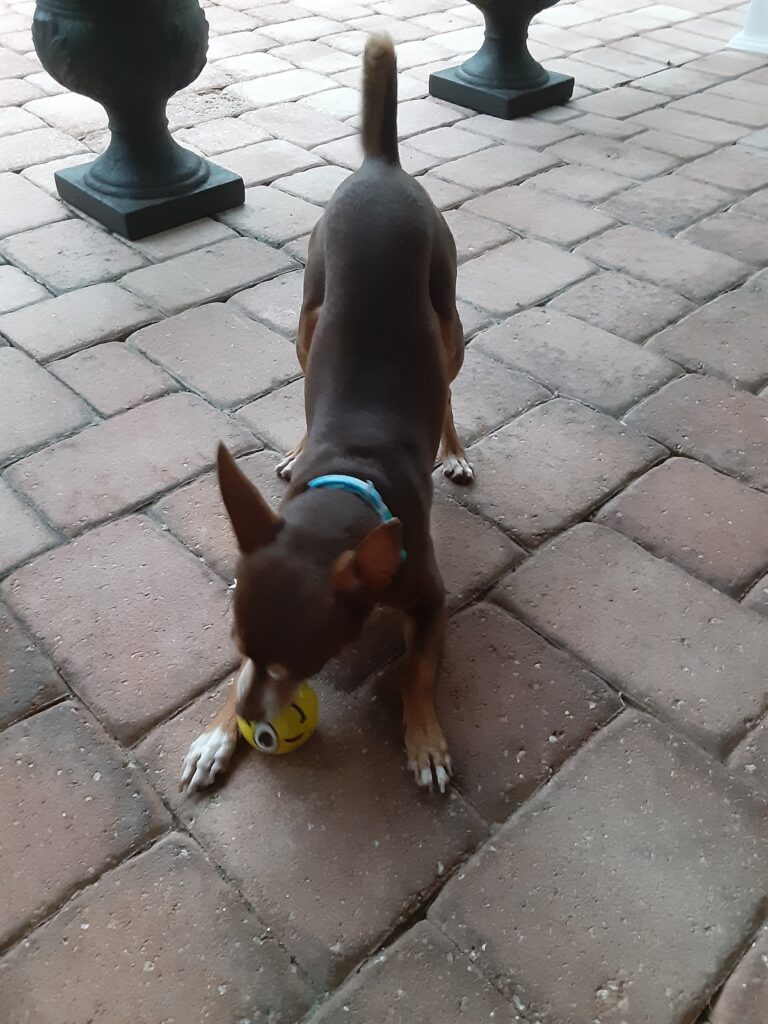

Injuries from a Chihuahua’s bite are typically limited to the superficial layers of skin. The bite may cause minor bleeding, and the skin around the bite site may become slightly swollen or bruised. The risk of infection from a Chihuahua’s bite is relatively lower compared to larger dog breeds. However, proper wound care is still important to prevent any potential complications. Cleaning the bite site with soap and water and applying an antiseptic can help reduce the risk of infection.
Immediate medical attention may not be required for injuries from a Chihuahua’s bite, unless the bite becomes infected or the person bitten experiences an allergic reaction. However, keeping an eye on the bite site and seeking medical attention if any signs of infection or complications arise is advisable
Husky: Grace in Force
Huskies, known for their endurance and strength, may engage in an attack scenario influenced by their natural instincts and behaviors.
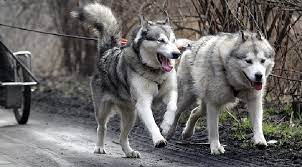


During a Husky attack, the potential injuries resulting from a bite should be assessed through a medical lens. The breed’s bite force, ranging from 320 to 620 psi, can cause notable damage. Puncture wounds, lacerations, and potential tissue contusions are among the injuries that can occur. The force behind the bite, driven by the dog’s jaw muscles, can affect deeper layers of tissue, including muscles, tendons, and ligaments within the hand.
Injuries from a Husky attack may involve bleeding, swelling, and bruising around the bite site. Depending on the intensity of the attack, the potential for nerve and blood vessel involvement should also be considered, which could result in sensory disruptions and bleeding complications.
Given the risk of infection associated with dog bites, including those from Huskies, prompt medical attention is imperative. Thorough cleaning and disinfection of the wound are necessary to prevent bacterial colonization. Antibiotics may be prescribed to mitigate the risk of infection.
Upon seeking medical care after a Husky attack, professionals will assess the extent of the injuries, potentially using imaging techniques like X-rays to identify hidden tissue damage or fractures. Wound management, including sutures or other closure methods, may be indicated to optimize healing and minimize scarring.
Boston Terrier: Finesse and Charm
A Boston Terrier’s bite force, while relatively low compared to larger dog breeds, can still have potential medical implications. The breed’s bite force is estimated to be around 100 psi. From a medical perspective, it’s essential to understand the bite force’s potential impact on human tissues.

When bitten by a Boston Terrier, the bite’s impact is generally limited to the superficial layers of skin due to their relatively low bite force. Injuries from their bites are often characterized by minor surface scratches, small puncture wounds, and gentle nips. These injuries may cause minimal bleeding and localized pain.
The bite’s low force reduces the risk of significant tissue damage, fractures, or deep lacerations, commonly associated with breeds possessing higher bite forces. However, even with the limited potential for severe injuries, it’s important to consider the possibility of infection due to the introduction of bacteria into the wound.
Immediate wound care after a Boston Terrier’s bite is still crucial. Cleaning the wound with soap and water and applying antiseptic can help mitigate the risk of infection. Monitoring the bite site for signs of inflammation, redness, or increased pain is essential in preventing complications.
Medical attention for a Boston Terrier’s bite may not always be necessary, particularly for minor injuries. However, if the bite site becomes infected or if there are concerns about potential complications, seeking medical advice is recommended.
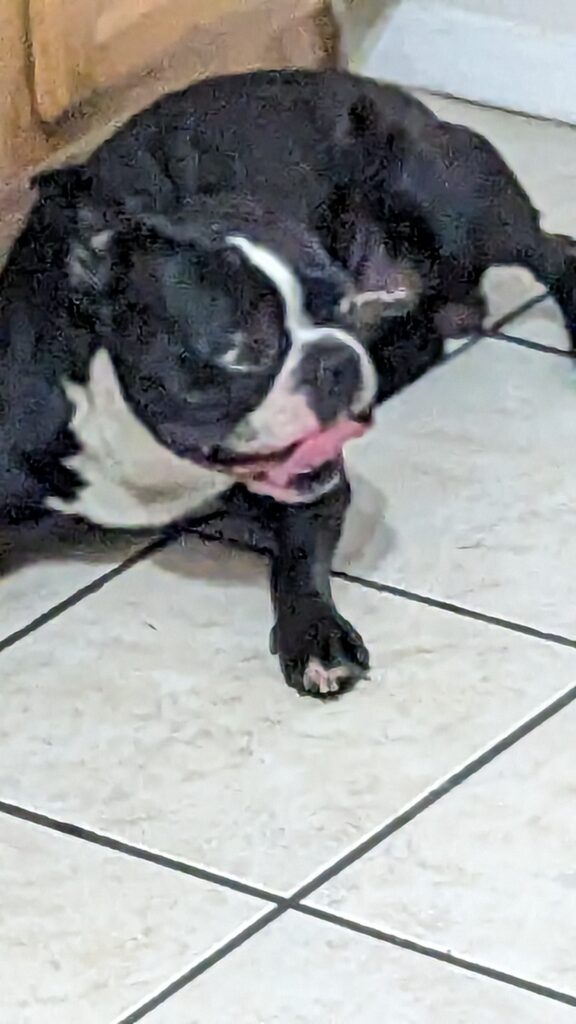
In conclusion, a Boston Terrier’s bite force, while generally low in comparison to larger breeds, can still cause minor injuries that require attention. Prioritizing proper wound care and monitoring for signs of infection are key aspects in managing the medical implications of a Boston Terrier’s bite.
Final words of wisdom
In conclusion, the accounts of various dog attacks and bites discussed underscore the importance of understanding and respecting the potential risks associated with interactions with dogs. While each breed possesses unique characteristics, all dogs have the potential to exhibit aggressive behaviors under certain circumstances. Whether it’s the formidable bite force of powerful breeds like Kangals, the agility and intensity of Dobermans, the versatility of German Shepherds, or the seemingly gentler nature of Chihuahuas and Boston Terriers, the underlying message remains clear.
Approaching any dog with caution, respect, and awareness is crucial to preventing potential harm. It’s vital to recognize that even breeds known for their gentle temperament can react defensively if they feel threatened or cornered. Ensuring proper socialization, responsible ownership, and understanding a dog’s body language are essential steps to fostering safe human-canine interactions.
In the event of a dog attack or bite, seeking immediate medical attention is paramount, regardless of the breed. The potential for tissue damage, infections, and psychological trauma underscores the need for prompt and thorough medical care. Reporting incidents to local authorities and seeking emotional support when needed contribute to a comprehensive response.
By sharing insights into the characteristics, bite forces, and potential consequences of different dog breeds, we aim to promote a culture of responsible pet ownership and informed engagement with our canine companions. It’s a reminder that while dogs can bring immense joy and companionship to our lives, safety and respect should always guide our interactions to ensure a harmonious coexistence between humans and their faithful four-legged friends.
